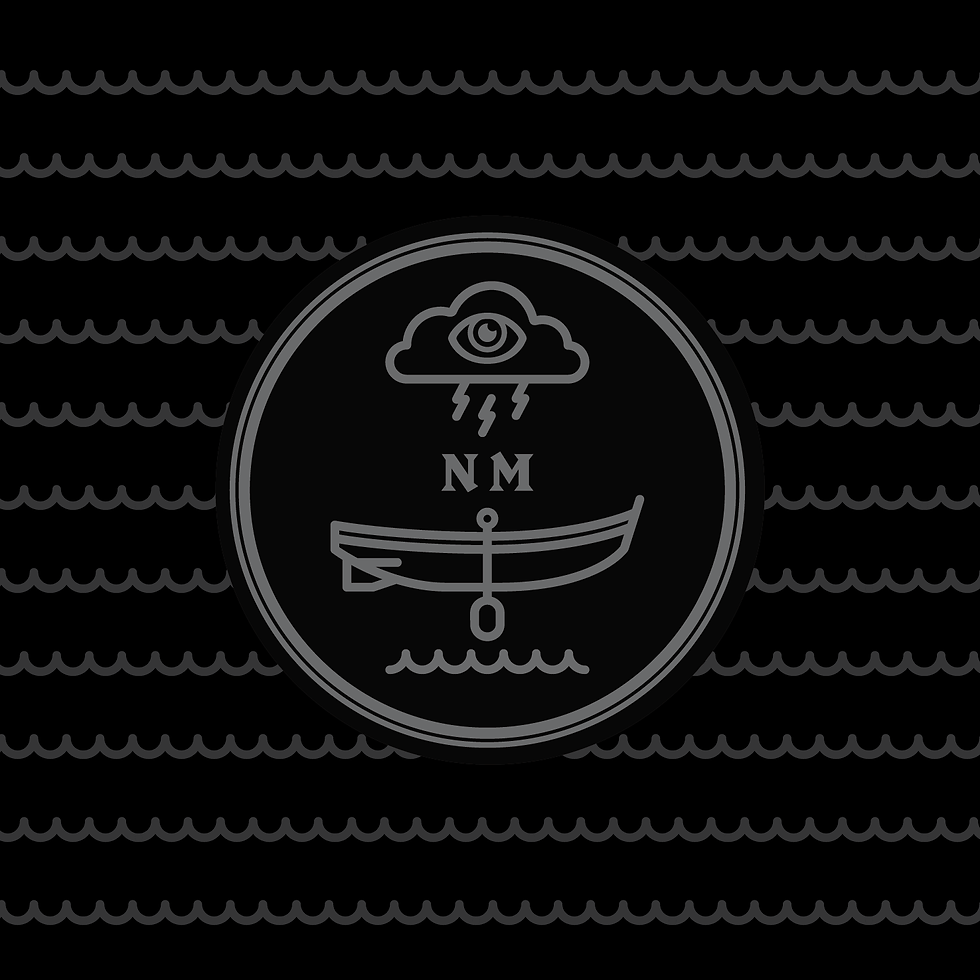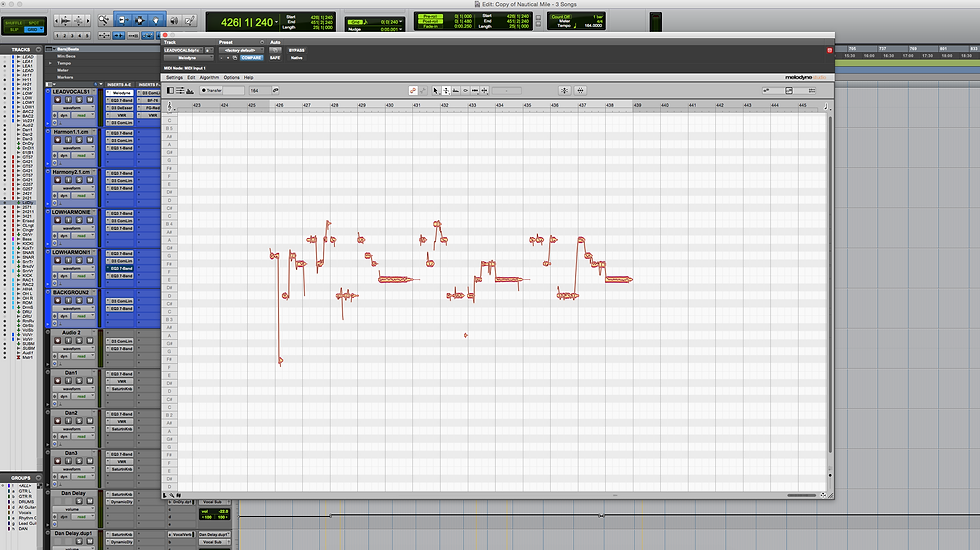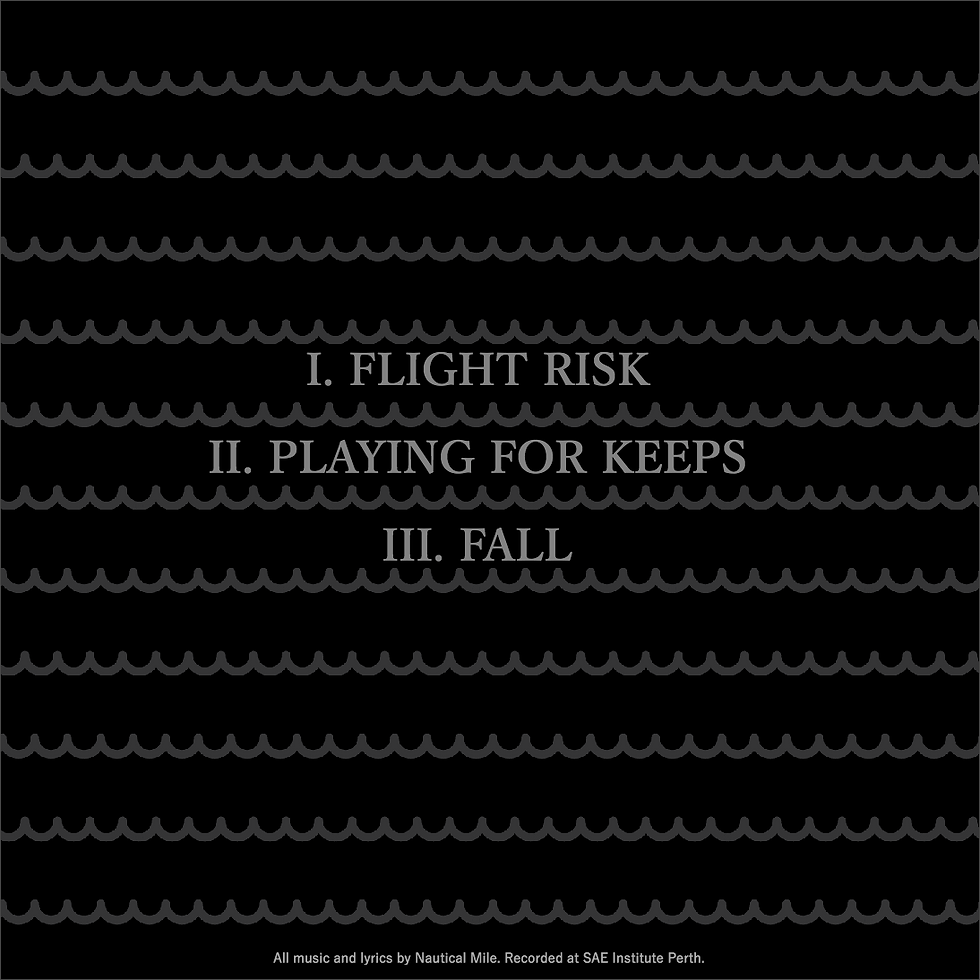Trimester 3 Post Mortem
- alec-lane
- May 16, 2016
- 5 min read

Trimester 3 has just finished and I managed to hand everything in. My major project is complete and I completed the goals and deliverables in my project outline. I consider my major project a success because the band are very happy with the finished product, however, I have learnt a lot from the mistakes I made during the process of recording and mixing my project. To recap, my major project was to record 3 songs for my band, Nautical Mile; 2 new songs and one previously released song. I recorded live drums, vocals, and recorded guitars using re-amping. I recorded bass direct in using an amp simulator.
Recording went quite smoothly and I managed to have everything recorded more than a week prior to the due date which gave me plenty of time to edit and mix. I had no problem recording guitars and bass but I made a few mistakes during the drums and vocal recording process. The first mistake that I didn't notice until after recording was that due to my mic position, I had way too much hi-hat bleed in my overhead mics. The reason I made this mistake is because I didn't check the overheads mics by themselves while the drummer was playing on the hi-hats prior to recording. This led to some problems; due to the hi hats being so loud, I had to keep my overhead tracks really quiet in the mix and cut out a lot of the higher frequencies. This did fix the issue of the hats being too loud in the mix, but in doing so I sacrificed the sound of the cymbals. Apart from this issue, the drums sounded good. I used Steven Slate Trigger to layer samples over the kick and snare tracks in the songs, and to replace the toms completely.

(Steven Slate Trigger 2 - Snare layering)
I also edited the drums heavily to the grid. This resulted in the track sounding very tight and perfectly in time, however it did mean that some of the 'ghost notes' on the snare were moved around from where they were originally, and some cymbal and hi-hat hits sounded a little bit glitchy. It took a lot of manual editing and listening on repeat to make sure everything still sounded as though it was played by a real drummer and not a robot.

(Drums all edited to the grid - beat detective didn't stand a chance)
The other mistake I made was a LOT worse, and made a super negative impact on my whole project. My choice of microphone for recording vocals for these songs was probably the opposite of what would have best suited them. Topher has a very high pitched voice with a lot of presence and a lot of sibilance. I chose the RODE K2 for recording vocals, purely because I think I got a bit too excited about never having used it before and just assuming that being a tube mic it would sound really good on vocals. However, the warmth and brightness of the tube mic combined with the presence in Tophers voice was just too much and there ended up being way too much presence in the vocal tracks. They sounded very piercing when played back at a high volume and just didn't seem to fit in the mix without being turned up loud. To combat this I had to do some pretty drastic cuts with EQ. I had to cut 2.3 and 3.4kHz by 15+ db as well as using a de-esser further cut some of the really nasty frequencies between 3.5-4kHz. There were a lot of dynamics in the vocal tracks too, with some parts really loud and some barely audible, so I had to adjust the clip gain on a lot of the different lines and even different words. I also had to compress a lot. Instead of using one compressor and slamming it, I actually used four compressors in a row. The first compressor I used as a limiter to trim 1-2 max off the very loudest parts of the track. I think used three more compressors each with 1-3db of gain reduction depending on the part of the song. I also used a compressor on the vocal buss track to help 'glue' all the harmonies together.
As I mentioned in the goals of my major project, I planned on using a plugin for pitch correction on all the vocals. I ended up downloading a trial version of Melodyne which was very useful and is not too difficult to use. I pretty much moved the pitch of all the vocal tracks and snapped them all to the grid. The original pitch of the vocals wouldn't have been too much of an issue if it were only the one vocal track but due to all the harmonies I recorded (up to 4 at a time) the combination of a bunch of tracks that were all slightly out of tune resulted in pretty messy sounding vocals.

(A couple of lines of vocals all nicely snapped to the grid)
Apart from these two mistakes, everything else worked out fine. The bass was recorded at my house with an amp simulator so that was really easy. I used elastic audio to edit most of the bass to the grid as well and didn't really have to use much processing on it; a little bit of eq and compression. The guitars worked out really well too. I originally recorded guitars at SAE by miking up my guitar amp and recording a dry signal at the same time, but I decided that I wasn't happy with the sound or the quality of playing. (I was really rushing by the end of the session to get it finished before SAE closed, and one of the strings on my guitar kept going out of tune). I was planning to use the dry guitar track to analyse where the transients were in the waveform, and group the tracks together to quantise them to the grid. Instead, I deleted all the guitar tracks and started again. I recorded all of the guitars at home, recording direct into my interface and just using an amp simulator as a reference to what they should sound like. After spending a long time recording and then editing the tracks, I took my ProTools session to SAE along with my guitar amp and used the re-amp box to send the dry guitar tracks out of the desk, into the input of the guitar amp, and recorded it with an SM57 and an MD421. This was a very good choice because I could easily edit all the guitar tracks before they were sent through the amp rather than after and it also meant I only needed a few hours in the studio to record all the guitar parts for the whole project.

Overall I am satisfied with how the project turned out. Even though I made some pretty big mistakes, I fixed them as much as I could in the mix and I have learnt what not to do next time. If I had chosen a different microphone for recording the vocals and checked my overheads for bleed the project would have turned out quite different. 2 of the 3 songs are being mastered by Simon Struthers at Forensic Audio and are due for release on Bandcamp within the next two weeks.















Comments